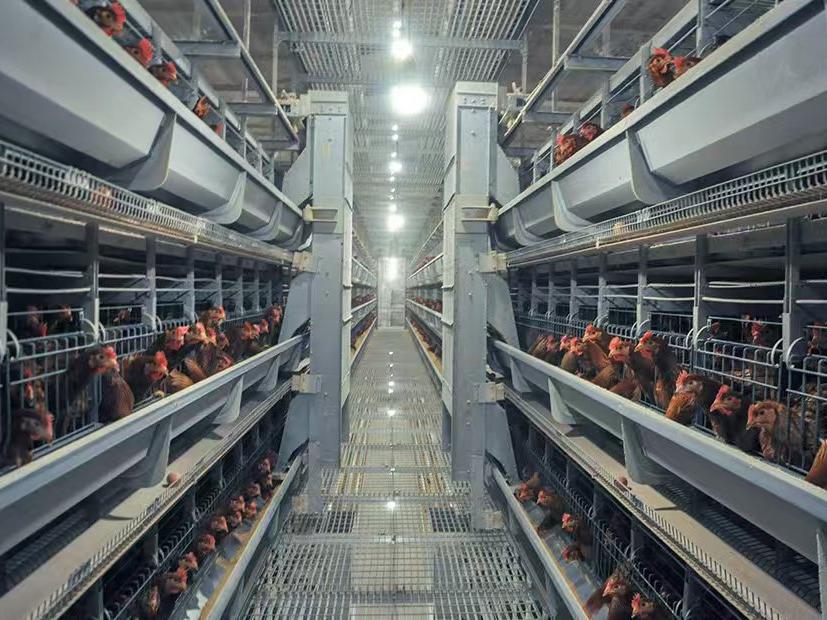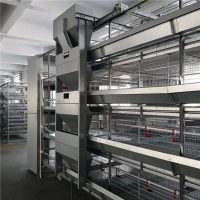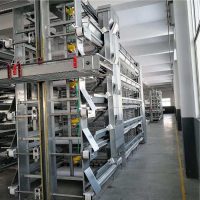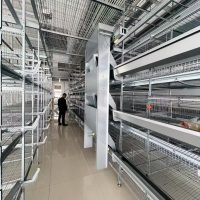home > Product > Battery Chicken Cage > Bucket Elevator Chicken Feeders
In modern poultry farming, farmers focus on efficiency and automation to increase production and reduce labor costs. Among various tools that enhance farm operations, bucket elevator feeders stand out because they save space, automate feeding, and distribute feed precisely. This article discusses how farmers apply bucket elevator feeders in poultry farming, highlighting their advantages and potential for future development.




The working principle of a bucket elevator feeder is straightforward yet effective. The system consists of small buckets attached to a chain or conveyor belt. As the belt or chain moves, it carries the feed from a central storage bin to the feeding points. The automated system regulates the speed and quantity of feed delivered, ensuring that the right amount reaches the poultry. Key features of bucket elevator feeders include:
1. Space Optimization
One of the primary benefits of bucket elevator feeders is their ability to save space. Specifically, the vertical or inclined design allows them to be used in areas where horizontal conveyor systems would occupy too much floor space. As a result, this makes them a great solution for poultry farms with limited room or multi-story buildings. Additionally, farms can make better use of available space, improving overall farm layout.
2. Precise Feed Distribution
Bucket elevator feeders offer highly accurate feed distribution. By regulating the speed of the conveyor system and the amount of feed dispensed into each bucket, the system ensures that each poultry receives the appropriate amount of food. Consequently, this precise distribution not only reduces feed wastage but also promotes a balanced diet for the animals. In turn, this leads to healthier poultry and more efficient feeding.
3. Automation and Labor Savings
Automating the feeding process helps reduce labor costs and minimize human error. Since bucket elevator feeders are equipped with automated controls that can be set to deliver feed at specific times, the need for constant monitoring is eliminated. Therefore, farm owners can focus on other tasks, which ultimately improves overall farm management efficiency. Moreover, this system ensures a more consistent feeding schedule, further optimizing operations.
4. Versatility for Different Feed Types
Bucket elevator feeders can handle a variety of feed types, including pellets, mash, and powder. This versatility makes them suitable for a wide range of poultry, such as chickens, ducks, and turkeys, which may require different types of feed depending on their growth stage and nutritional needs. Furthermore, this adaptability allows farms to adjust the feeding system based on the changing requirements of their flocks, ensuring optimal feed delivery at all times.
Our breeding chicken equipment is not only designed to perfection but also meets the needs of modern poultry farms. Here are the key reasons to choose our equipment:
Bucket elevator feeders are especially beneficial in farms where space is limited, and automation is essential for efficient operation. Below are some ideal applications:
Bucket elevator feeders are an essential tool for modern poultry farming, offering a combination of space efficiency, precision feeding, and automation. They help reduce labor costs, improve feed utilization, and ensure that poultry receive the right amount of food at the right time. With increasing demands for automation and precision in poultry farming, bucket elevator feeders will continue to play a crucial role in optimizing farm operations. Investing in this technology is a smart decision for farm owners looking to improve productivity and streamline their feeding processes.
If you are interested in learning more about how bucket elevator feeders can benefit your poultry farm, or if you want to customize a feeding solution for your specific needs, don’t hesitate to contact us. Our team of experts is here to provide you with detailed product information and help you choose the best solution for your farm’s requirements.
